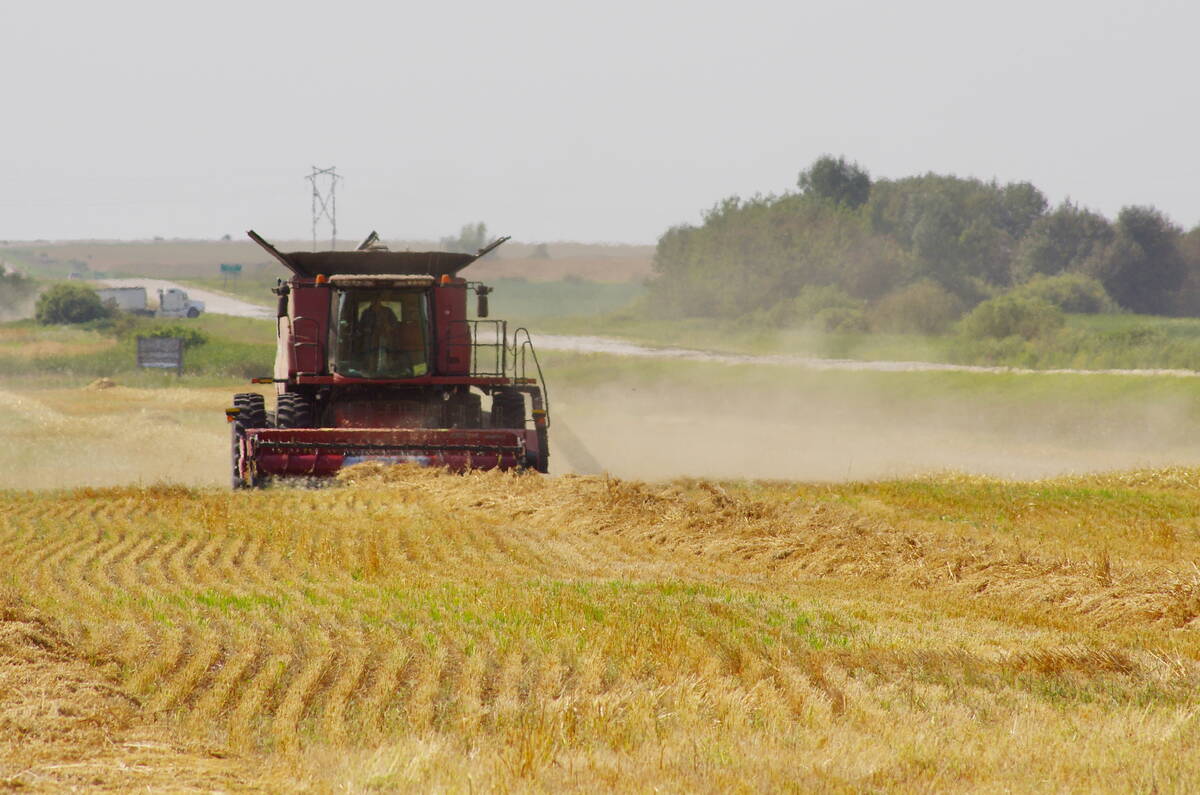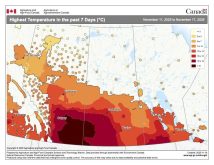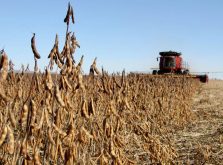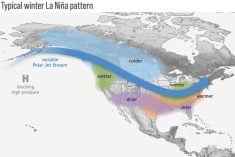Some Manitoba oat producers are spending longer in their combines or swathers this fall due to a late-August blast of rain that has spurred straw regrowth, making fields more difficult to navigate.
Lionel Kaskiw, crop production specialist with Manitoba Agriculture, outlined the problem at the department’s CropTalk podcast Sept. 3.
“The straw’s staying green, even though the seed may be dry,” he said.
Read Also
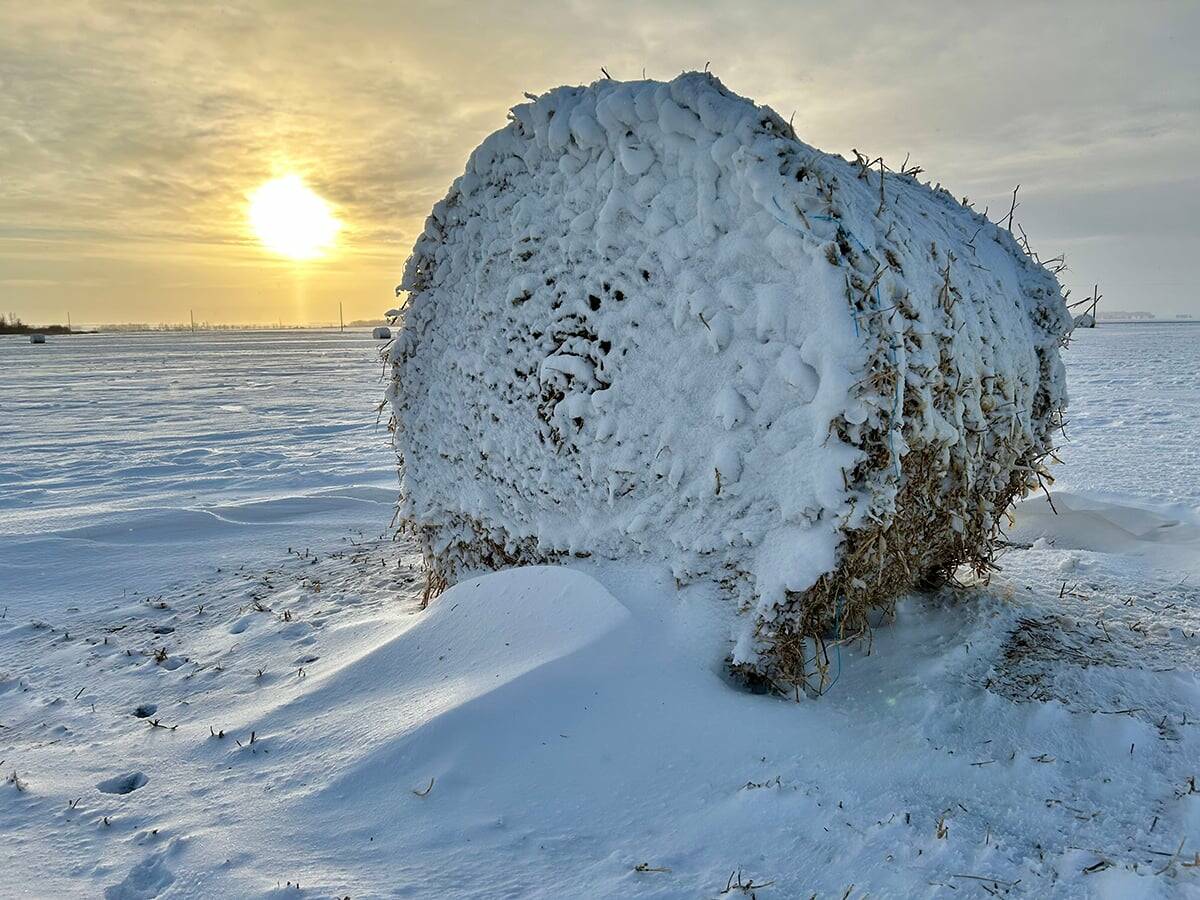
What is perfect Christmas weather?
What is ‘perfect’ Christmas weather on the Prairies? Here’s where you should head this holiday, according to historical weather data.
“Producers are having a difficult time trying to straight cut oats right now and that’s why we are seeing a lot of the oats being swathed.”
WHY IT MATTERS: Manitoba is set up for a good oat crop, assuming the combines can get it off the field, despite drought conditions earlier in the year.
“It’s a struggle,” said Yves Lapointe, chair of the Manitoba Oat Growers Association.
“It’s just when you’re putting straw through the combine it takes a lot more power to do so and when that happens — because there’s moisture in the straw — you tend to get more grain losses because the seeds try to come out with the straw.”
He got his oat crop off several weeks ago, but a three-and-a-half-inch rain on his farm just south of Winnipeg didn’t make the job easy.
The rains in question were largely in the southern part of the province.
Lapointe was among the Manitoba farmers who initially parked the combine and opted for swathing in an effort to manage a still-green oat crop. That mitigated some trouble, but set the stage for other issues. Straw was still damp underneath the swath when he went to harvest due to the rain, he noted, while regrowth (also spurred by rain) made it difficult for combines to pick up the swath.
“Quality has become a bit of an issue too,” he noted. “There is some mildew on the grain and some I even heard (of) sprouting.”
Lapointe still has neighbours struggling against the clock to harvest their oats.
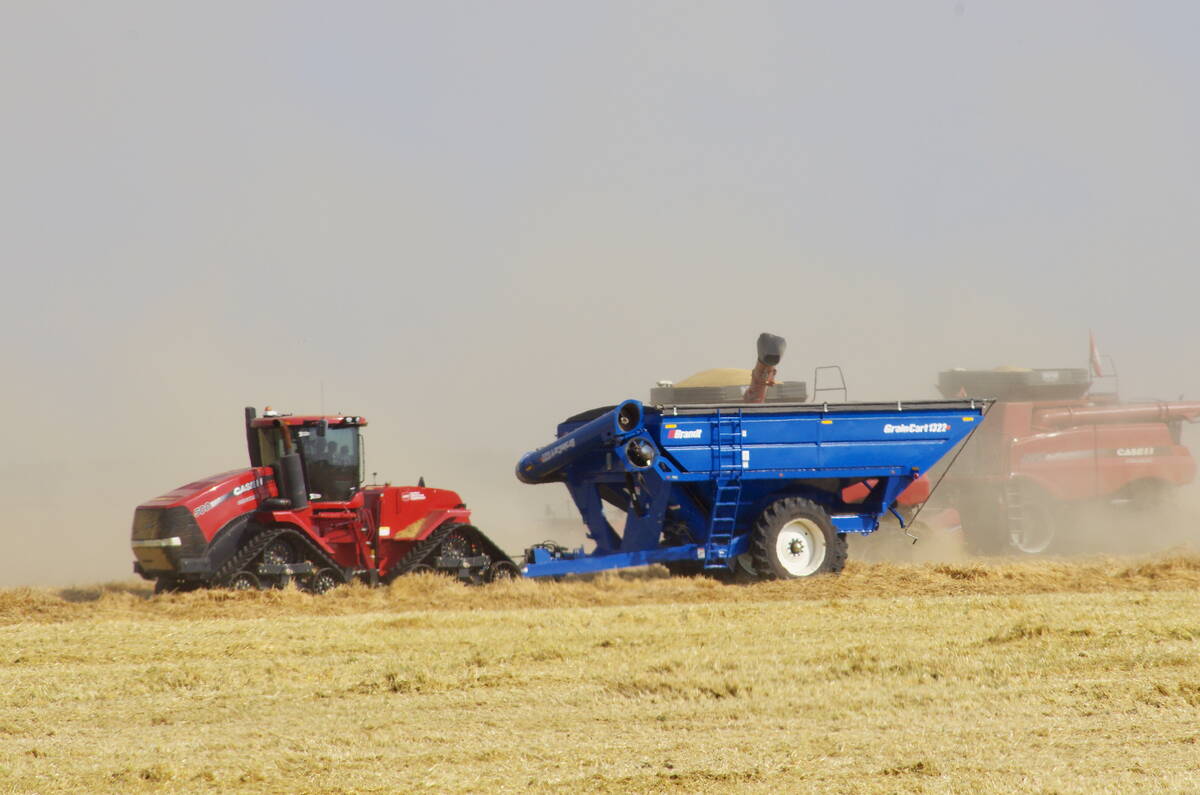
It’s a fairly significant delay, he noted. The cereal is usually done by the third week of August in his area, although he expected combines would get remaining crop in during the following days after he spoke to the Co-operator.
“The people who are leaving it standing are getting to it but (with) the ground conditions now the straw is breaking down and the crops are lower to the ground … You almost have to shave the ground to get them all.”
Lapointe has also observed some variety-dependent shelling among standing oat crops.
Good oat outlook
Overall, Manitoba is expecting a good oat crop. A Manitoba crop report Sept. 9 put oat yields between 100 to 150 bushels an acre (bu./ac.), with about 63 per cent of oats harvested. The majority of acres in central Manitoba and the Interlake (90 and 80 per cent, respectively) were in the bin at the time of the report.
“I have heard some test weights in that 40-pound-plus range,” Kaskiw noted, something that will be good for marketing.
“I think all the test weights this year are going to be definitely an advantage to producers, because pounds make bushels,” he said.
Oat yield increase predicted for 2025
Manitoba accounted for 18.5 per cent of Canada’s oat area in 2025, Manitoba Agriculture said. It’s the second-largest oat-producing province after Saskatchewan. Cereals Canada estimated the Canadian oat sector exerts a $4.2-billion impact on the economy annually.
A record oat yield occurred in Manitoba in 2024, with an average 119.4 bu./ac.
In July 2025, Statistics Canada estimated a country-wide one per cent increase in oat production in 2025: the result of predicted higher yields (up 2.3 per cent to 90.7 bu./ac.) offsetting lower total harvested area (a drop of 1.2 per cent to 2.4 million acres compared to last year).
Wheat
Wheat, meanwhile, has seen uneven yields across Manitoba this year due to moisture levels.
About 79 per cent of the spring wheat crop was in as of Sept. 9, the province reported. Overall, yield averages have been reported at 50-60 bu./ac., but numbers swung wildly even within a single region. Some parts of the Pembina Valley in central Manitoba have seen outstanding yields, “with many producers reporting record-breaking yields in their spring cereals, and some requiring additional grain bin storage,” the provincial crop report noted.
Wheat from those fields was coming in at 90 bu./ac. or even as high as 100 bu./acre. A short drive north though, and farms in north-central Manitoba saw as low as 45 bu./ac..
“It really depends on the region,” said Anne Kirk, cereals specialist with Manitoba Ag.
Yield reports from other regions included a 60-70 bu./ac. average in eastern Manitoba, above-average yields in the southwest (65-70 bu./ac.), 50-60 bu./ac. (with peaks of 70) in the northwest so far, and 65-75 bu./ac. in the Interlake, despite drought challenges earlier in the year in some of those regions.

“In general, we’re pleasantly surprised at the yields that we’ve seen this year, just because it has been a dry year,” said Kirk.
Areas falling below 50 bu./ac. were those that saw little rain, or rains falling after they would do wheat crops any good.
“It’s not like any individual farmers are having poor yields in an area where most other people have high yields. We’re just seeing regional areas where drier areas and sandier soils have lower yields,” Kirk said.
Better management
Kirk lauded better farm management, such as soil and stubble management, for the pleasantly surprising yields.
Yields are quite good considering the limited moisture throughout parts of the province.
“Doing practices like that generally help to conserve moisture,” she said.
Proper seed placement can also make a difference.
“I think there’s not much more that farmers could do,” she said. “I think a lot of it had to do with the timing of seeding. Depending on when farmers seeded, and how dry it was, and how wet it was at the time, that also made a big difference.”
Kirk said the variation in yields is mainly regional.
Post-harvest planning
Kirk recommends a fall soil test to assess the nutrients in the soil, especially given the moisture see-saw impacting crop growth and fertilizer.
If farmers applied fertilizer in the spring, and it was quite dry in May and June, the crops may not have had uptake of the fertilizer. Now the harvest has turned wetter.
“In some areas that were quite dry, we’ve seen a real turnaround in moisture. We have had a lot of rainfall in the past few weeks,” she said.
Some farmers are now struggling with excess moisture, while others remain significantly dry.
The moisture variation, and uncertainty about what the situation will be over the coming month, puts hurdles in front of post-harvest plans.
“For example, not tilling your crops to enhance snow capture would be great if we knew the spring was going to be quite dry, but because spring could be dry or it could be wet, it just makes those decisions pretty difficult for farmers,” Kirk noted.

